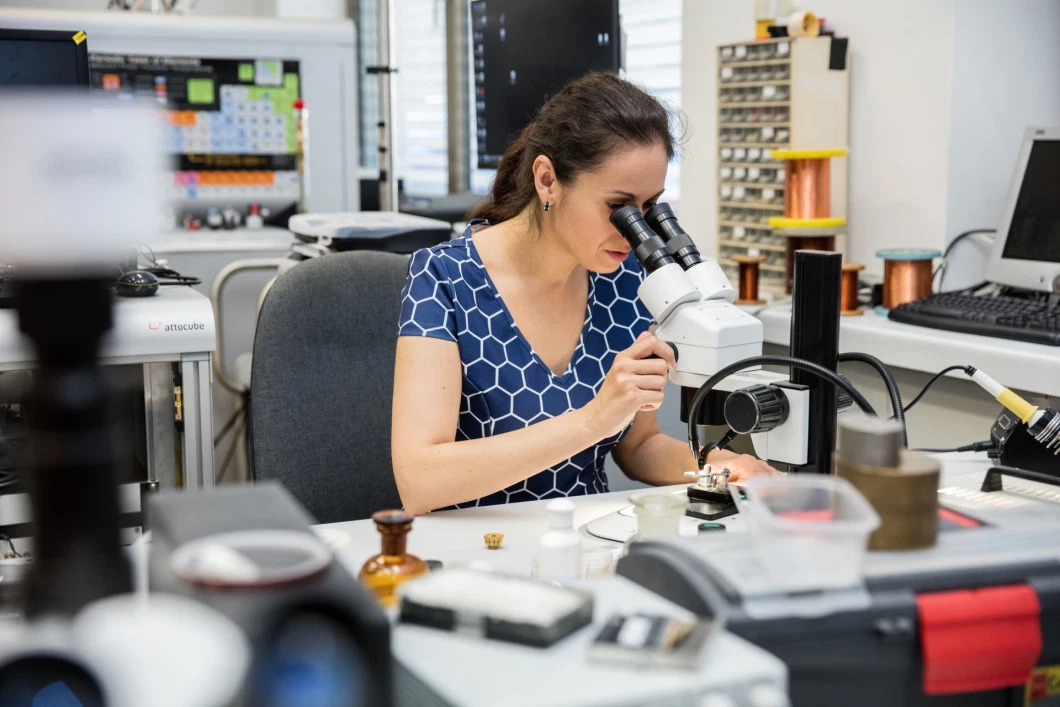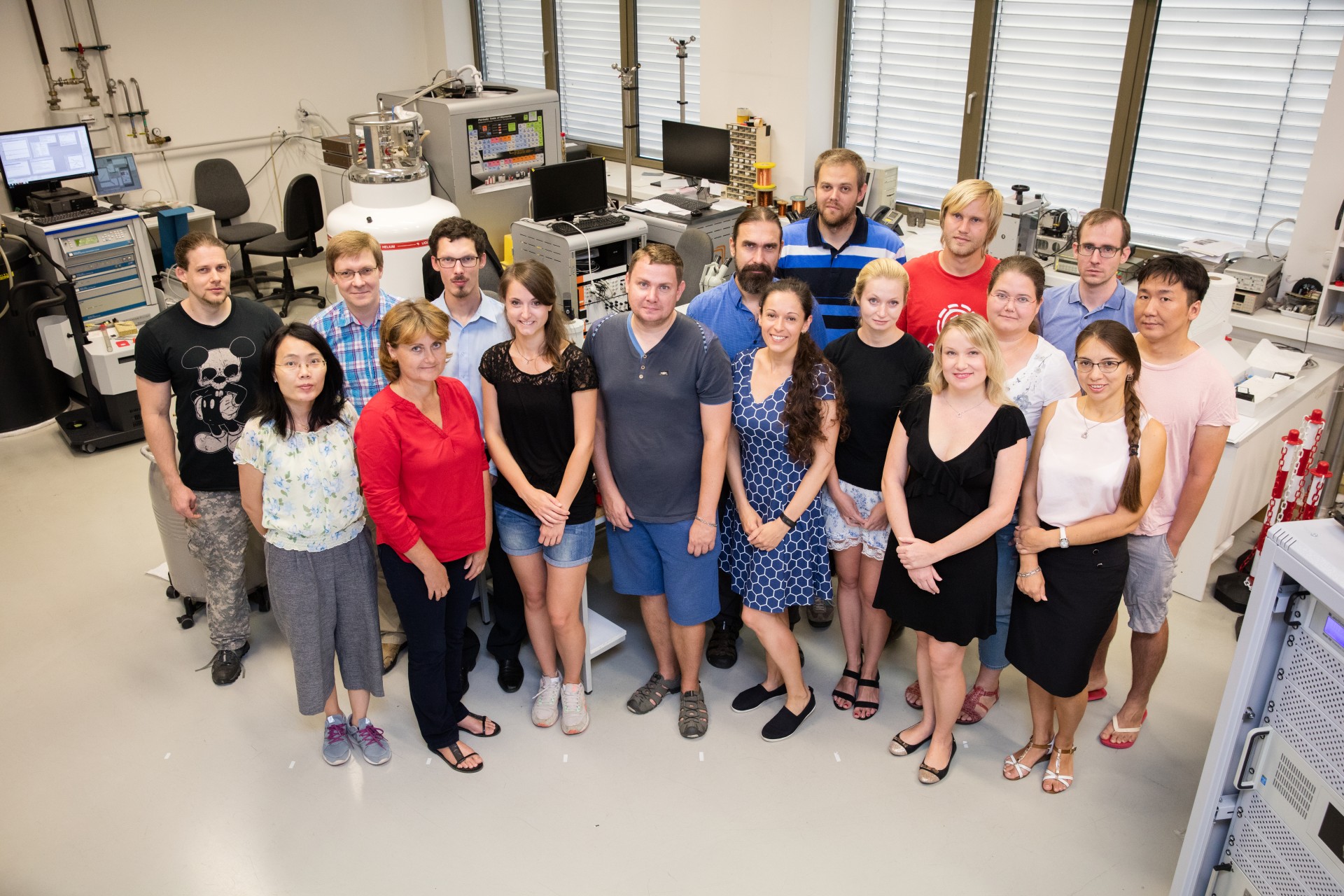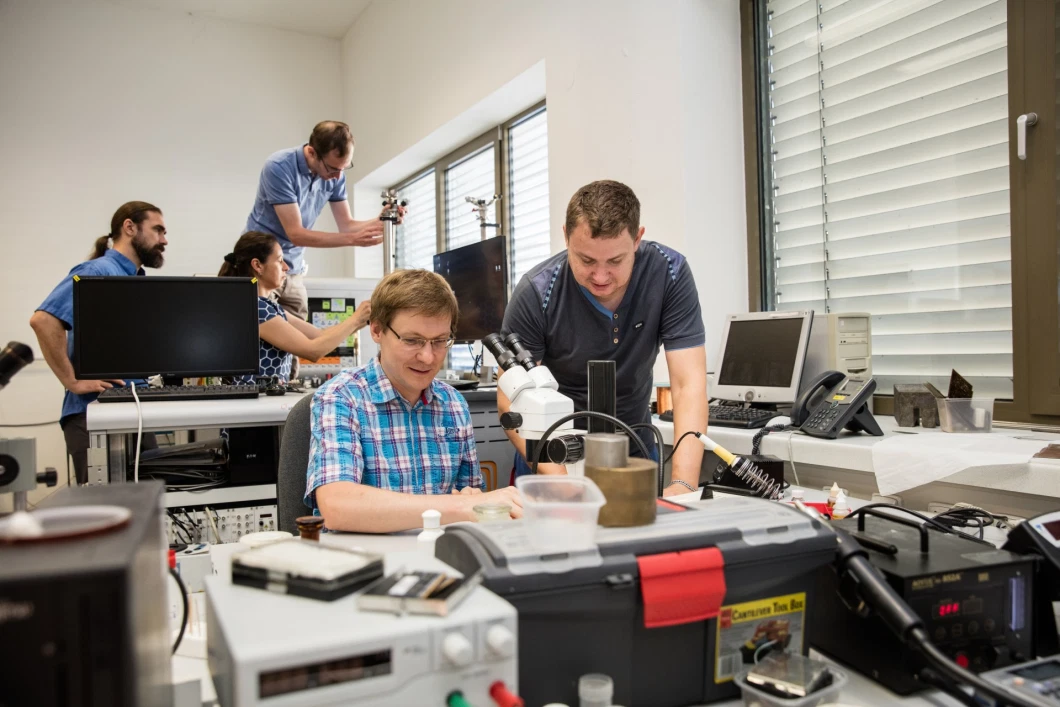Full project name:
Trans-Spin NanoArchitectures: from birth to functionalities in magnetic field
Project Details
The TSuNAMI project (Trans-Spin NanoArchitectures: from birth to functionalities in magnetic field, ERC Starting grant no. 716265) aims to discover how different spin units – like magnetic molecules or magnetic nanoparticles represented by quantum or classical spins, and their analogues in reciprocal space hosted by two-dimensional crystals, the pseudospins – coexist and communicate in magnetic matter. The project introduces a new class of magnetic materials, the so-called spin hybrids, which are composed of at least two different types of spin units. Novel concepts of synthesis and nanofabrication based on magnetic field assisted nanoassembly and “magnetic click chemistry” have been developed. Advanced spectroscopic techniques have been developed and applied to explore the remarkable physics of spin hybrids. The project consortium comprises Charles University and J. Heyrovsky Institute of Physical Chemistry, Czech Academy of Sciences, members of the Nanocarbon group.
-
Principal Investigator
Dr. Jana Kalbáčová Vejpravová -
Team
5 postdocs, 2 students -
Duration
2017 - 2022 -
Research area
nanotechnology

Dr. Jana Kalbáčová Vejpravová
Principle investigator
Current position: associate professor in condensed matter physics & head of the TSuNAMI group
Current research focus: low-dimensional magnets (molecules, nanoparticles, 2D materials), Raman spectroscopy of nanocarbons, 2D materials and magnetic materials, magnetic field assisted chemistry
Previous expertize: crystal growth of intermetallics, superpurification of metals, strongly correlated electron systems, magnetometry, X-ray and neutron scattering methods, synthesis and complex characterization of nanoparticles
For more details, please see TSuNAMI webpage.
Role of MGML in the Project
A great part of the research carried out within the TSuNAMI project is carried out in direct collaboration with the MGML facility. The MGML is a great platform for carrying out the inclusive characterization of the individual spin units and the spin hybrids such as X-ray diffraction, SQUID, VSM and Hall magnetometry, etc. On the other hand, the development of the cutting-edge experimental techniques, including optical spectroscopies in the high static magnetic fields and high-frequency electromagnetic fields expands the extensive portfolio of experimental techniques available in the MGML.




